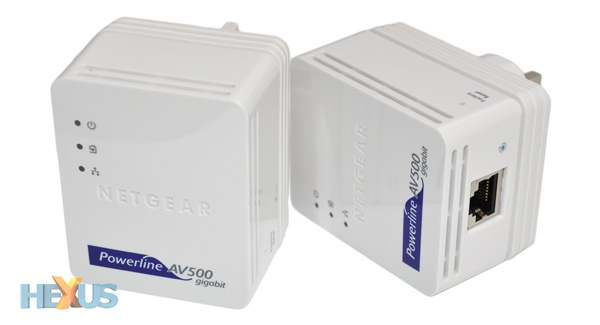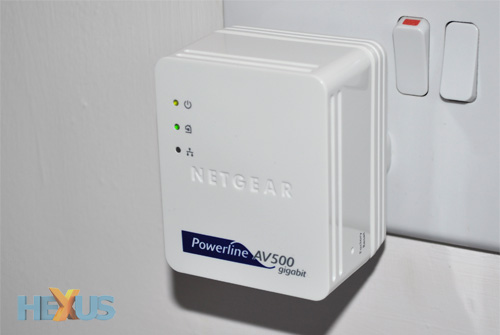Introduction
Remember when using the Internet entailed hooking up your one-and-only PC to a dial-up modem? How times have changed. Today, we're willing to bet that almost every HEXUS reader has at least a couple of web-connected devices. Whether it's the PC, the laptop, the games console or the smart TV, there's no shortage of hardware that craves that all-important uplink.
And that's bound to have users facing a familiar conundrum; how do you get some of those items online if your router is in another room? Wireless is a common solution, but one that isn't without drawbacks; your wireless range will vary and sending signals through the airwaves is susceptible to interference. You could, of course, run patch cable from room-to-room for an optimum network experience, but if your experience is anything like my own, you'll then face the wrath of the lady of the house, who tends not to appreciate wires along skirting boards or holes in walls.
Such complications are precisely why many users opt for Powerline networking, where a building's existing mains electric cabling is used to transmit data from one room to another. This method is secure and able to cover a wide distance, but the performance of Powerline can vary wildly. For the most part, speed is determined by two key factors; the quality of the building's electric wiring, and the capabilities of the Powerline adapters themselves.
We've seen capable performance from the recently-reviewed and particularly-convenient Power Ethernet Sockets, but for those who need the extra bandwidth, Netgear is hoping to deliver with the Powerline Nano 500 Set.

Fetching £80 at retail and going by model number XAVB5101, this set makes use of an Atheros AR7400 chipset that's capable of delivering speeds of up to 500Mbps. 'Up to' are the key words, as real-world speeds are likely to be far less when network overheads are taken into account.
Still, this is one of Netgear's quickest Powerline solutions, and the Nano 500 set is an attractive package; each adapter is about the same size as a standard wall plug and installation is simple. Plug one into a spare socket and attach your router/modem, plug-in the second in another room and attach any Ethernet device, then turn them on. There's a small button used to secure the network, and by pressing it for a few seconds on both adapters, the pair are quickly networked using 128-bit AES encryption.
There are three helpful status LEDs, too - power (turns green when powered on), Powerline (turns on when another adapter is detected) and Ethernet (lights up when an Ethernet device is attached). What's handy is that the Powerline LED will glow in one of three colours; it's red when a link rate of under 50Mbps is detected, amber with a link rate of between 50Mbps and 80Mbps, and green when the link rate is measured above 80Mbps.
As expected, an auto-standby feature is also implemented to help lower running costs. After 10 minutes inactivity the adapters will automatically turn off the LEDs and switch to a low-power state that typically consumes less than 0.5 Watt, and power consumption remains below 5 Watts when in use.

The overall package is neat and refined, but one drawback of the Nano's compact dimensions is the lack of ports. There's no mains passthrough - so you lose a wall socket during use - and there's no integrated switch, so you're limited to one Ethernet connection unless you choose to attach an external switch at the expense of additional clutter.
Nonetheless, the Powerline Nano 500 Set is a tidy solution for anyone looking to extend high-speed broadband to areas that wireless won't reach. But is the advertised speed really any better than cheaper alternatives? Let's find out.









